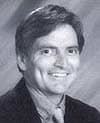by Katie Griffith
Orthodontic Products talks with two orthodontists about technologically advanced patient communication systems

Richard M. Dunn, DDS, and Nicholas J. Savastano, DMD, MS, jointly operate two busy orthodontic practice locations in the Central Florida area (one in Longwood, Fla, and one in Lake Mary, Fla). Dunn has been in practice in the area since 1977, and was joined in 2003 by Savastano after he graduated from Ohio State University. In their offices, patients are not assigned to one particular doctor, and each patient sees both Dunn and Savastano. Overall, Dunn and Savastano have more than 15,000 patients in active treatment, recall, and retention.
In an e-mail interview, the orthodontists tell Orthodontic Products about the ways in which two high-tech office solutions from TeleVox—T.LINK and HouseCalls™—have helped them manage the two practices and all of their patients.
Orthodontic Products: What was your process for delivering appointment reminders and other practice communication before implementing the TeleVox systems?
 |
 |
| Richard M. Dunn, DDS | Nicholas J. Savastano, DMD, MS |
Dunn and Savastano: Our staff was responsible for confirming their patients for the following day. It was tough for our assistants to juggle this in-between seeing patients and taking care of their other chairside duties. Our office used mail recall cards, birthday cards, missed appointment cards, etc.
OP: Walk us through the process of communicating with a patient now that you have HouseCalls and T.LINK implemented.
Dunn and Savastano: First of all, potential patients have the ability to solicit our office through our Web site by filling out a new-patient form and/or e-mailing questions. Once a new patient has called and set up the first appointment, he or she is directed to our Web site, where several of the forms needed can be filled out prior to that appointment. New patients also have the capability to sign up and log in to view appointment information and sign themselves up for text-messaging reminders.
We contact patients using HouseCalls and an e-mail 48 hours prior to the appointment. When patients get a phone call, they are prompted to confirm the appointment or cancel simply by pushing a button. The e-mail also has a confirm button the patient clicks on, and their response is sent to our office via e-mail. There is also a button for patients to click if they would like to add that appointment to their Microsoft Outlook Calendar.
A report is e-mailed to our office that details the results of the phone call reminders. This report is very detailed and helpful when having to answer questions about any problems with calls being received by the patient. The report tells whether the phone was answered and the patient hung up on the call, if there was a message left on the answering machine, if a live person picked up and gave a response, or if that person canceled or confirmed the appointment. The e-mail report only takes confirmations, since patients are requested to call the office to cancel or change appointments.
Throughout treatment our office sends our patients newsletters and e-mails on upcoming office events and contests. Flyers, links, and automatic recall and birthday cards can be attached using T.LINK. T.LINK offers the ability to specify who receives the e-mails. You can select all responsible parties and patients, only patients, only responsible parties, one individual, etc.

OP: How do HouseCalls and T.LINK benefit you as orthodontists?
Dunn and Savastano: We feel the benefit not as a direct impact on us, the orthodontists, but through our staff. It reduces the workload of our staff members and gives them the capability of communicating directly to each patient in more than one way.
We do not have a need to have anything sync with our portable devices because our staff manages our scheduling and patient communication. However, our patients like the ability to use their portable devices to access T.LINK via our Web site. Patients especially like the e-mail reminders and text messaging reminders they can get on portable devices.
Having high-tech communication for the practice eases our minds. We do not have to wonder if our staff confirmed the patients for the following day. We can rest assured that the patients will get an e-mail and a phone call reminding them of their upcoming appointment, as well as recall reminders to those potential patients waiting to start braces.
OP: What was the implementation process like?
Dunn and Savastano: The overall experience was relatively easy. Our office had been using HouseCalls for more than 8 years when we decided to add T.LINK, which made it easy to incorporate. It took us about 1 week to get everything implemented. We had all our scripting on paper from previous systems and in our procedure manual, so we e-mailed it over to our representative, Holly Armentrout, and she did most of the legwork for us. Holly worked hand in hand with Dr Savastano. Most of the work to implement the system was done remotely or through e-mail.
OP: How does HouseCalls make patients more responsible?

Dunn and Savastano:
- Patients get a confirmation call, e-mail, and/or text message 48 hours ahead of time that prompts them to call if there is a conflict and they need to cancel. This gives us 48 hours to fill that appointment slot.
- Patients can keep track of their appointments by logging in to verify time and locations through our Web site.
- Patients can view their insurance ledgers to aid the office with making sure the insurance companies are paying on time.
- With the Flex Reimbursement Accounts, patients can view and print their ledgers to submit for reimbursement without our office having to take the time to print and mail them. We do have to give the responsible party the appropriate ADA code they will need to use each month on their receipts.
OP: How much front-end work is involved with HouseCalls?
Dunn and Savastano: Daily setup for the calls to be made is a simple 30-second to 1-minute computer procedure handled by our scheduling coordinator. You can use a staff member’s voice; however, we decided to use the TeleVox voice to save time with the setup process. Additionally, the computer recognizes names without having to prerecord them as far as we know.
OP: What are the problems associated with relying on such high-tech practice solutions?
Dunn and Savastano: The only drawback that we have found is a prolonged power outage. We are dealing with computers, so if they are not working then the information is not being sent. We have only had one instance of this.
OP: Your office conducts regular T.LINK training sessions. What is covered in these sessions? Who conducts them? How much time do they take out of the workweek?
Dunn and Savastano: Currently, Savastano is conducting the assistant training program at our office. We set aside 1 hour every Wednesday during our lunch break for the training sessions so that it doesn’t interfere with our workweek and patient schedules. Having regular training sessions using T.LINK has been a great tool in our office by bringing the entire staff up to speed and making sure we are on the same page.
OP: What is the actual financial impact that your practice has experienced since implementing T.LINK and HouseCalls?
Dunn and Savastano: These systems save our office approximately $12,500 per year, which translates into nearly a 38% decrease in our expenses. Our goal this year is to increase that to 60%.
OP: What is the actual time-saving impact that your practice has experienced since implementing the two TeleVox systems?
Dunn and Savastano: Staff time is reduced by approximately 28% by using HouseCalls to confirm every patient that is scheduled (which can be anywhere from 85 to 110 patients per given day). Sending recall cards, birthday cards, and BA cards takes quite a bit of time to do each month, and we required our staff to handwrite each one of these because we felt computer labels were impersonal. Having mass e-mailing abilities with T.Link saves time for staff members on any of our promotions or events that we inform patients about as well.
OP: Did your practice find it necessary to continue with paper reminders?
Dunn and Savastano: Not really. We are able to make all patients happy with the several options that the system offers. For those patients who are not computer literate, the phone call works well.
OP: Is there a difference in how your younger and older patients or parents embraced the new systems?
Dunn and Savastano: Our younger patients enjoy the personal e-mails to them reminding them of their appointments (this helps as an added extra reminder for Mom or Dad), and they love the personalized birthday greetings they receive from our office. Most of them will comment to us at their appointment that they received our e-mail wishing them a happy birthday. They don’t realize that it is automated—they think we actually e-mail them ourselves.
Our older patients that are in the business world love the system. Sometimes it is a big selling point in the new-patient exam or even at the phone call. Our older patients that grew up on computers don’t know any other way. It’s a plus no matter what.
Dunn and Savastano can be reached through their Web site, centralfloridasmiles.com.







